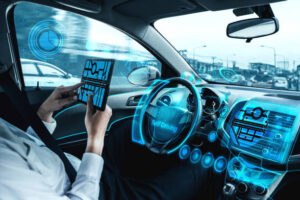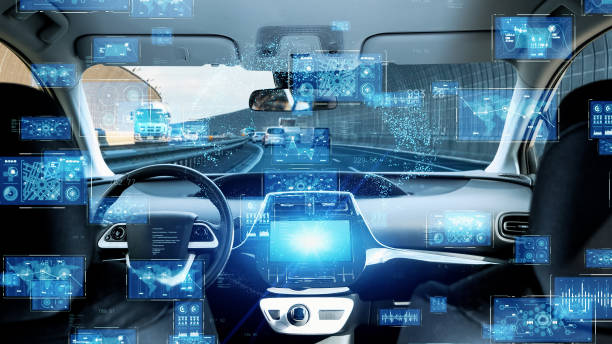
Discover how Taipei blends tradition with technology through the Taipei self-driving Gharry project. Explore its historical significance, technological innovations, and future prospects in this comprehensive guide.
Introduction
The Taipei Self-Driving Gharry represents a remarkable fusion of Taiwan’s rich cultural heritage with cutting-edge technology. This innovative project has transformed the traditional horse-drawn gharry, a staple of Taiwanese transportation for centuries, into a modern marvel of autonomous driving. By merging historical design with self-driving technology, Taipei not only preserves its cultural legacy but also addresses contemporary urban challenges such as congestion and environmental impact. This blog post delves into the multifaceted aspects of the Taipei Self-Driving Gharry, exploring its historical significance, technological advancements, environmental benefits, and future prospects.
Historical Significance of the Gharry
To fully appreciate the Taipei Self-Driving Gharry, one must understand the historical importance of the gharry itself. Traditionally, gharries have been an integral part of Taiwanese culture, symbolizing a slower, more elegant mode of transportation that harkens back to a bygone era. These horse-drawn carriages have carried passengers through bustling city streets and tranquil rural areas alike, embodying the grace and charm of a simpler time. As Taipei embraces modern technology, it retains the classic design of the gharry, honoring its historical roots while adapting to contemporary needs.
Evolution of the Gharry into the Modern Era
Transitioning from traditional horse-drawn carriages to self-driving vehicles represents a significant evolution in transportation. The process involves not only technological upgrades but also a careful preservation of the gharry’s iconic aesthetic. The Taipei Self-Driving Gharry integrates autonomous driving systems while maintaining the classic design elements that have become synonymous with Taiwanese culture. This evolution is a testament to the city’s commitment to honoring its past while embracing the future.

Technological Innovations Behind the Self-Driving Gharry
At the heart of the Taipei Self-Driving Gharry project lies advanced autonomous driving technology. These self-driving gharries are equipped with sophisticated sensors, cameras, and algorithms that enable them to navigate Taipei’s complex urban landscape safely and efficiently. By leveraging innovations such as LIDAR (Light Detection and Ranging) and AI (Artificial Intelligence), the self-driving gharry can detect obstacles, interpret traffic signals, and make real-time decisions, ensuring a smooth and secure ride for passengers.
Design and Aesthetic Features of the Self-Driving Gharry
One of the most striking aspects of the Taipei Self-Driving Gharry is its ability to blend modern technology with traditional design. The vehicle retains the classic charm of the original gharry, including ornate decorations and elegant lines, while incorporating sleek, contemporary features. This design approach not only pays homage to the gharry’s historical significance but also ensures that the vehicle aligns with modern standards of comfort and safety.
Environmental Benefits of the Self-Driving Gharry
In addition to its technological and design innovations, the Taipei Self-Driving Gharry offers significant environmental benefits. By replacing traditional fossil fuel-powered vehicles with electric-powered autonomous gharries, Taipei aims to reduce greenhouse gas emissions and decrease air pollution. This shift contributes to the city’s broader goals of promoting sustainable transportation solutions and enhancing urban air quality.
Impact on Urban Congestion
The introduction of self-driving gharries is expected to have a positive impact on urban congestion in Taipei. Autonomous vehicles are designed to optimize traffic flow, reduce bottlenecks, and improve overall traffic efficiency. By integrating self-driving gharries into the city’s transportation network, Taipei hopes to alleviate some of the traffic congestion that plagues its streets, leading to a smoother and more enjoyable travel experience for all residents.

Cultural Preservation Through Modernization
The Taipei Self-Driving Gharry project serves as a unique example of how modernization can coexist with cultural preservation. By updating the traditional gharry with self-driving technology, Taipei not only honors its historical transportation methods but also demonstrates that cultural heritage and technological advancement are not mutually exclusive. This approach ensures that the city’s cultural identity remains intact while progressing toward a more innovative future.
Public Reception and Community Impact
The public reception of the Taipei Self-Driving Gharry has been overwhelmingly positive. Many residents appreciate the city’s efforts to maintain traditional elements while embracing new technology. Community impact studies indicate that the introduction of these autonomous vehicles has fostered a greater appreciation for Taiwan’s cultural heritage, while also improving the overall quality of life through enhanced transportation options.
Challenges and Solutions in Implementing Self-Driving Technology
Implementing self-driving technology comes with its own set of challenges. These include technical issues related to vehicle navigation, regulatory hurdles, and public acceptance. Taipei’s approach to overcoming these challenges involves rigorous testing, collaboration with technology experts, and transparent communication with the public. By addressing these challenges proactively, the city aims to ensure the successful integration of self-driving gharries into its transportation system.
Collaborations and Partnerships
The development of the Taipei Self-Driving Gharry has involved numerous collaborations and partnerships between government agencies, technology companies, and cultural organizations. These partnerships have been crucial in ensuring the successful integration of self-driving technology while preserving the gharry’s historical significance. The collaborative approach highlights the importance of cross-sector cooperation in achieving innovative and culturally respectful solutions.

Economic Implications and Benefits
Economically, the Taipei Self-Driving Gharry project has the potential to bring numerous benefits. The development and maintenance of autonomous gharries create jobs and stimulate economic growth within the city. Moreover, the increased efficiency and reduced operational costs associated with self-driving vehicles can lead to long-term economic advantages for both the city and its residents.
Regulatory and Policy Considerations
The implementation of self-driving technology requires careful consideration of regulatory and policy issues. Taipei has developed a comprehensive regulatory framework to address safety, liability, and operational concerns associated with autonomous vehicles. By establishing clear guidelines and standards, the city aims to ensure the safe and effective deployment of self-driving gharries.
Comparisons with Other Autonomous Vehicle Projects
Comparing the Taipei Self-Driving Gharry project with other autonomous vehicle initiatives provides valuable insights into its uniqueness and impact. While many cities are exploring self-driving technology, Taipei’s approach of integrating it with a traditional cultural element sets it apart. This comparison highlights the innovative nature of Taipei’s project and its potential to influence global trends in transportation.
Public Transportation Integration
Integrating self-driving gharries into Taipei’s existing public transportation system is a key aspect of the project. By coordinating with other modes of transportation, such as buses and trains, the city aims to create a seamless and efficient travel experience for passengers. This integration ensures that self-driving gharries complement rather than compete with existing transit options.

Community Engagement and Feedback
Community engagement plays a crucial role in the success of the Taipei Self-Driving Gharry project. By actively seeking feedback from residents and incorporating their suggestions, the city ensures that the project meets the needs and expectations of its citizens. This approach fosters a sense of ownership and support for the initiative, contributing to its overall success.
Environmental Impact and Sustainability Goals
The environmental impact of the Taipei Self-Driving Gharry extends beyond reduced emissions. The project aligns with broader sustainability goals, such as promoting green transportation and reducing the city’s carbon footprint. By prioritizing sustainability, Taipei demonstrates its commitment to environmental stewardship and sets a positive example for other urban areas.
Conclusion
The Taipei Self-Driving Gharry represents a visionary approach to transportation that combines cultural preservation with technological innovation. By integrating autonomous driving technology into traditional gharries, Taipei not only honors its historical legacy but also addresses modern urban challenges. As the city continues to develop and expand its fleet of self-driving gharries, it sets a precedent for how traditional elements can evolve in harmony with technological advancements, paving the way for a more sustainable and culturally rich future.
Read Also: Middagbezoek aan Bomas of Kenya en Dinner Carnivore
